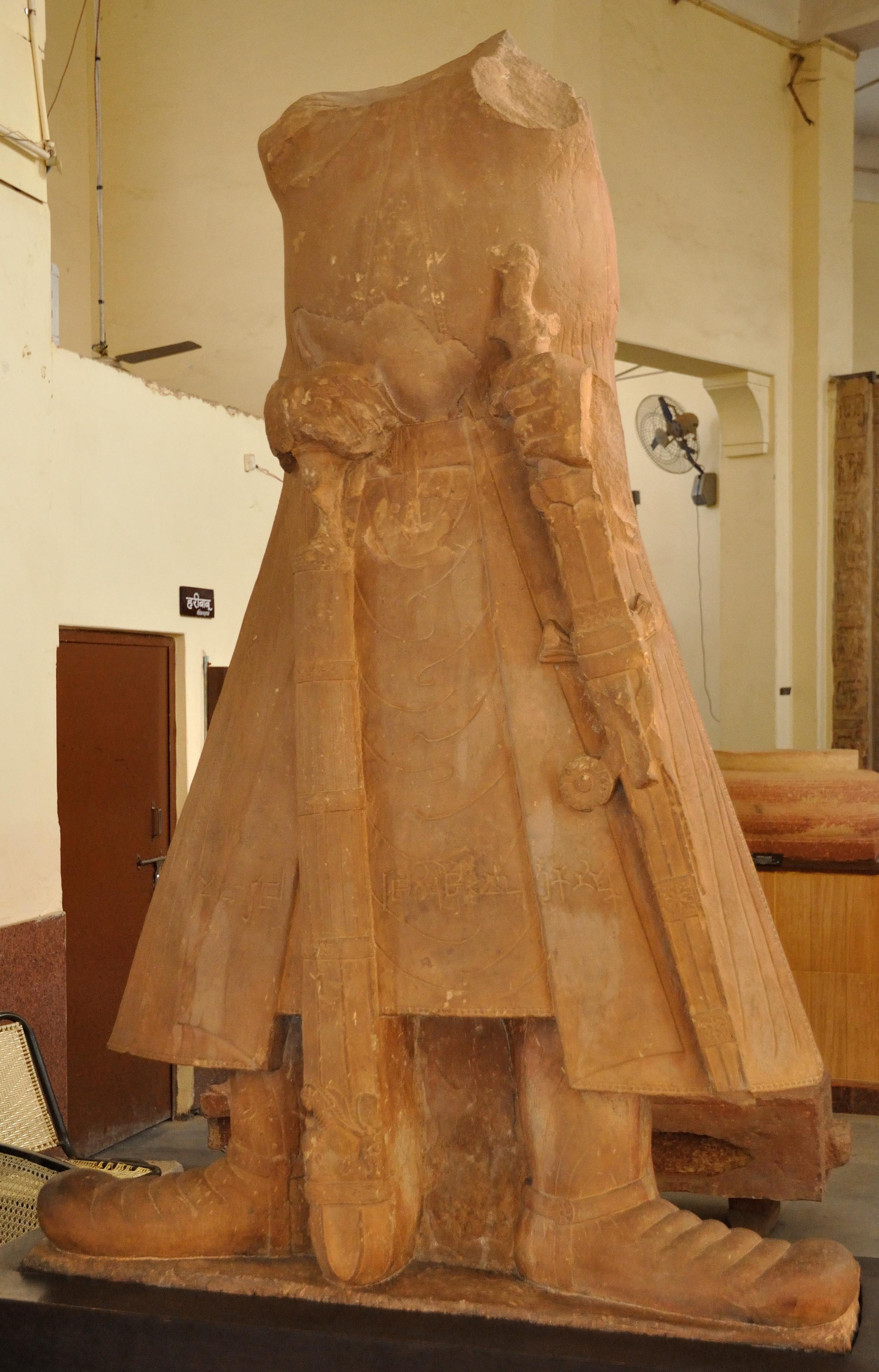
Create an Amazon Wedding Registry
Kushan Statue of Kanishka, Mathura, India, mid 2nd century AD

Photo by: Biswarup Ganguly


This artefact resides at the Government Museum, formerly The Curzon Museum of Archaeology, Museum Road or Murari Lal Rajpal road, Dampier Nagar, Mathura, Uttar Pradesh, India. This museum is administrating by the State Government of Uttar Pradesh of India.
Kushan rulers of the second century A.D. are shown in statues with thick padded boots which may be an indication of the nomadic origins of the dynasty. The Kushan ruler is shown wearing a long coat, open down the front displaying a shorter robe underneath. The coat is of a heavy felt or leather
Benjamin Rowland, The Art and Architecture of India, Baltimore, 1954, pp. 75-78, Pl.44, Statue of Kanishka, mid II century A.D., Curzon Museum, Muttra.
Elsie Holmes Peck, The Representation of Costumes in the Reliefs of Taq-i-Bustan. Artibus Asiae, Vol. 31, No. 2/3, 1969, Fig. 14.
Referenced as Illustration 130, p147 in Tamara Talbot Rice, Ancient Arts of Central Asia, 1965
130 Carved figure in pink sandstone inscribed, 'The King, King of Kings, His Majesty Kanishka'. Although the head is missing, it was originally about life-size and probably represents a portrait of the king. Kushan, second century.
pp. 130-132
Hackin considered Kanishka to have been both the great legendary figure extolled in Bactria's epics and also the real ruler of a kingdom which extended from the Ganges to the Jaxartes. He is indeed the most intriguing of the Kushan rulers known to us. A low-relief sculpture discovered at Mathura bearing his name presents a figure which was probably intended as his portrait (Ill. 130). It is, therefore, particularly unfortunate that the top of the slab is missing and, with it, the king's head. It shows Kanishka holding a sword and mace, and with his feet planted on the ground in so masterful a manner that he seems to bestride his vast kingdom. He wears nomadic dress and even though he was to end his days as a fervent Buddhist, there is no trace of Indian influence in this sculpture. Both in style and conception the work is basically Parthian or, if it stems from the direction of the Ganges, Scytho-Parthian. Schlumberger has defined Kushan figural art as a blend of Greek, Achaemenian and nomadic elements; the term Greek must be interpreted as Graeco-Roman, and the nomadic must be taken to include Scytho-Parthian. In this instance, however, Greek elements are absent but other sculptures of this school and period reveal Sassanian influences in addition to those enumerated by Schlumberger. The latter expressed themselves with particular vigour in the rendering of horsemen, most of whom are shown wearing nomadic dress. Gandhara played a most important role in the development of Buddhist sculpture and thus of Kushan culture. It was not an offshoot of Bactrian art, but a local creation which may have evolved under the stimulus of Alexandria, the influence of which may have reached this eastern region in the wake of commerce. The climate of Gandhara is such that wall-paintings cannot survive there for long; as a result her artistic creations have come down to us in the form of sculptures. The Gandharan school of sculpture was important already in the second century BC, but it was only when the region became the centre for the production of Buddhist works that its influence made itself felt among its neighbours, more especially in what are known to us today as Afghanistan and Pakistan.
130 Statue: King Kanishka, inscribed ‘The king, king of kings, His Majesty Kanishka’. Pink sandstone, originally enhanced with metal plaques. H. c. 5′ 7″ (1.70). Kushan, second century. Photo: Archaeological Museum, Mathura
Referenced as figure 88e in The Armies of Bactria 700BC - 450 AD, Volume 2 by Valerii P Nikonorov
(e) Portrait statue of Kanishka I from Mathura (India), which seems to date from the early years of his reign (drawing after Rosenfield J M, 1967, fig 2); see Plate 5A as a reconstruction.